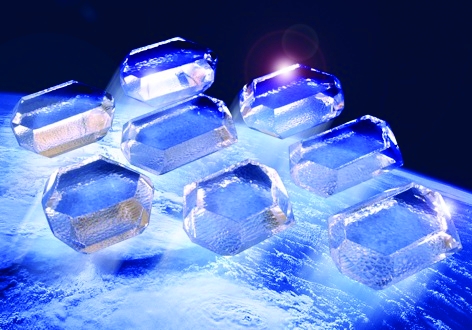Most people are familiar with quartz in clocks and watches, but what might surprise you is how vital quartz crystals are in almost every satellite we manufacture. At our Stevenage site we grow some of the purest quartz crystals in the world, which is essential in order to match the high levels of accuracy our customers demand from our spacecraft.
Quartz is known for being the key to a highly precise oscillator, but when used in telecommunication or navigation satellites, there is no margin for error. To give an idea of the level of accuracy I would ask you to imagine laying a line of sand from London to New York, making a chain of grains lined up back to back, we could tell if one grain were removed. That is the sort of accuracy our satellites require and our crystals achieve!
The piezoelectric properties of quartz make it ideal for use in spacecraft electronic equipment. As with quartz clocks, satellites have quartz crystal oscillators that vibrate when you pass an electrical signal through them, which in turn provides a highly precise tuned frequency. This frequency is the basis for the timing components required in the synchronisation on satellite payloads, be it for navigation, communications or military applications.

Although the growth of synthesised quartz began nearly 100 years ago, the techniques required for the commercial growth in highly accurate applications were not perfected until the latter half of the 20th century, particularly the very high purity quartz that we grow here in Stevenage.
The principles of the manufacturing process are in fact very similar to your old chemistry lessons at school. Each quartz crystal begins life as a ‘seed’ immersed in a bath of chemicals. This is contained in a sealed vessel and subjected to high temperatures and pressures. Depending on how much quartz is required this process can take anything from 3 to 7 months. The result is a large block of single-crystal quartz, usually about the same size as a household brick.
This high-purity quartz can then be sliced, ground, lapped and polished into thin slices of crystal down to a similar diameter and thickness as a contact lens. These small pieces of quartz are then hermetically packaged and integrated into our payload circuit components and subjected to a rigorous test campaign, primarily focused at the frequency stability. Only those that meet the required standard will make it into the final electronic circuits that will be subjected to the extremes of space.
Who would have thought that such a simple crystal would be a key and critical building block in satellite communications!










Water Sector Talent Exodus Could Cripple The Sector
Maybe if things are essential for the running of a country and we want to pay a fair price we should be running these utilities on a not for profit...